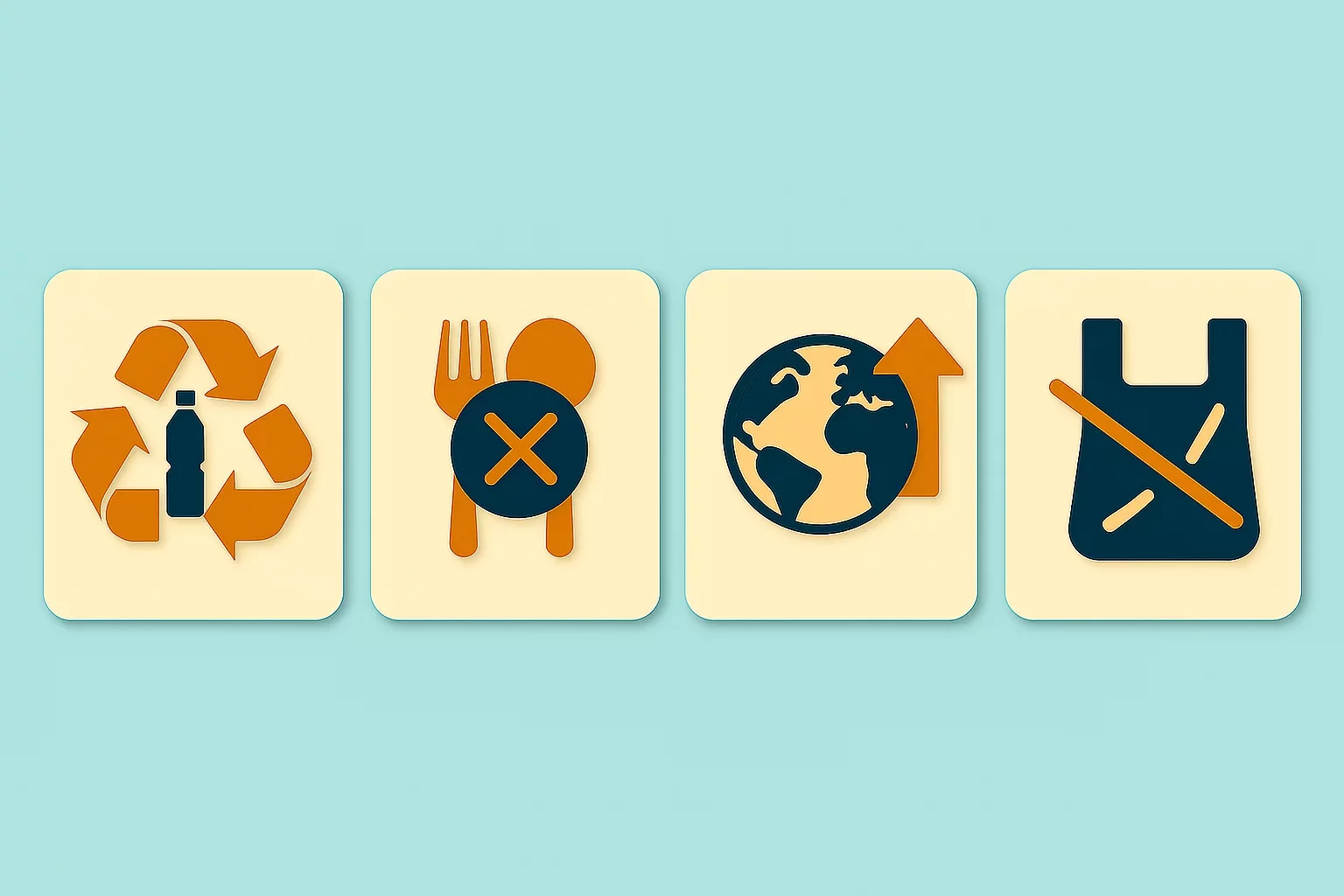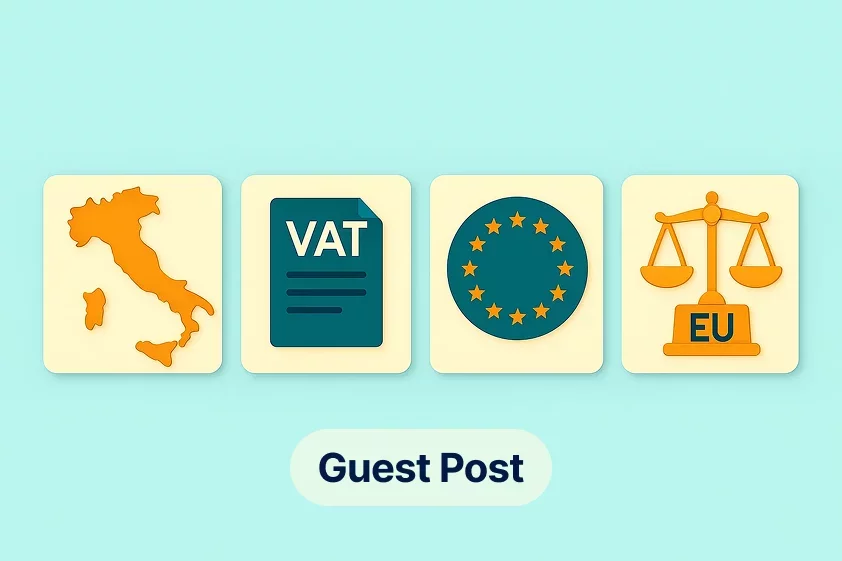Europe’s Digital VAT Future Is Already Here, and It Started in Italy

Summary
Italy was the first EU country to implement mandatory, full-scale electronic invoicing (e-invoicing) for B2B/B2C transactions via its centralized platform, the Sistema di Interscambio (SdI).
The SdI system, managed by the Agenzia delle Entrate, ensures real-time transactional visibility for fraud prevention and a measurable reduction of the VAT gap.
The EU’s new VAT in the Digital Age (ViDA) package, which entered into force in April 2025, mandates standardized, real-time transaction-level reporting based on the EN16931 schema.
Italy’s system must evolve to align with ViDA, particularly by harmonizing its XML structure and integrating with the Central VIES System by the 2035 deadline for full EU harmonization.
A 2024 penalty reform introduced a graduated, proportional system of sanctions for e-invoicing violations, moving toward "fair enforcement" and encouraging voluntary compliance.
🎧 Prefer to Listen?
Get the audio version of this article and stay informed without reading - perfect for multitasking or learning on the go.
The European Union’s transition toward a fully digital VAT environment is reshaping the fiscal architecture of the Single Market. The long-awaited VAT in the Digital Age (ViDA) legislative package, which officially entered into force in April 2025, represents the most ambitious attempt yet to harmonize real-time VAT reporting and combat fraud across Member States.
Among the EU countries, Italy stands out as both a pioneer and a laboratory for this digital transformation. As early as 2014, Italy began implementing mandatory electronic invoicing (e-invoicing) through its centralized platform, the Sistema di Interscambio (SdI). Over the following decade, this system evolved into one of the most comprehensive digital VAT reporting infrastructures in the world.
Italy’s experience provides an invaluable case study for the EU’s new vision of VAT governance, one in which real-time data exchange, cross-border standardization, and trust-based compliance form the cornerstones of modern tax administration. Yet as the European Commission pushes ahead with ViDA’s full implementation by 2035, Italy’s system, while advanced, must continue to evolve to remain aligned with EU-wide technical and legal requirements.
1. The ViDA Framework: A New Era for European VAT
Officially entered into force on 14 April 2025, the ViDA legislative package introduces a single, cohesive framework for the digital reporting of VAT transactions across the EU. Its objectives are threefold (i) to ensure fair and efficient VAT collection in an increasingly digital economy; (ii) to close the VAT gap through enhanced real-time reporting; and (iii) to reduce compliance burdens and simplify cross-border trade.
In particular, ViDA rests on three key pillars:
Pillar I: Digital Reporting Requirements (DRRs) and e-invoicing;
Pillar II: VAT treatment of the platform economy;
Pillar III: Single VAT registration across the EU.
The Digital Reporting Requirements constitute the foundation of the reform. For the first time, Member States will be required to introduce standardized, real-time transaction-level reporting, using the EU’s e-invoicing format based on the EN16931 schema.
From 1 July 2030, all cross-border B2B transactions will have to be reported through electronic invoices compliant with this EU format. The data will then be transmitted to national tax authorities, and within one day, shared through the Central VAT Information Exchange System (VIES), which will serve as the EU’s digital clearinghouse for VAT information.
This model will eventually replace fragmented national systems, ensuring that all Member States speak the same “digital language” of VAT.
2. Italy’s Early Digitalization: From Public to Private E-Invoicing System
Italy’s digital VAT journey began in 2014, when the government introduced mandatory e-invoicing for public administration transactions (B2G). The initial goal was administrative efficiency and transparency, but it soon became evident that the same infrastructure could help combat tax evasion, historically a persistent challenge in Italy.
In January 2019, the system was expanded to cover B2B and B2C transactions, making Italy the first EU Member State to impose full-scale e-invoicing obligations on private-sector operators.
Under this regime, every invoice - whether addressed to a business, consumer, or public authority - must transit through the Sistema di Interscambio (SdI). The platform, managed by the Italian Revenue Agency (Agenzia delle Entrate), performs several key functions:
validating invoice data and checking mandatory VAT fields;
ensuring the authenticity of the issuer and recipient VAT numbers;
forwarding the validated invoice to the recipient; and
storing transaction data for audit and compliance purposes.
The SdI’s design ensures that all transactions are visible to tax authorities in real time. This level of transparency has significantly reduced opportunities for fraud and false invoicing, contributing to a measurable narrowing of Italy’s VAT gap.
3. Progressive Expansion and Integration
Following the 2019 reform, Italy continued refining its digital reporting framework.
In July 2022: e-invoicing became mandatory for self-employed persons and small businesses under the flat-rate tax regime (if their annual turnover exceeded EUR 25,000).
In 2022–2023: the “Esterometro” obligation for reporting cross-border transactions was abolished, and all such transactions began to flow directly through the SdI.
In March 2023: the VAT exemption threshold was raised to EUR 85,000, reducing compliance costs for micro-enterprises while maintaining inclusion within the e-invoicing ecosystem.
Through these steps, Italy progressively built a comprehensive, inclusive digital VAT system, now covering virtually all taxpayers and transaction types.
4. E-Reporting: Beyond E-Invoicing
Although Italy’s Sistema di Interscambio (SdI) remains the backbone of its e-invoicing infrastructure, the country has also introduced additional E-Reporting measures (also known as Digital Transaction Reporting). These measures are designed to capture transactional data from outside the e-invoice process, particularly for cross-border transactions and retail sales receipts.
E-reporting ensures that transactions not subject to the standard e-invoicing process remain visible to the tax authority in real time. These mandates cover two major areas of activity:
Cross-border invoices. Since 1 July 2022, all invoices involving non-Italian counterparties (for instance, when an Italian company sells to a foreign customer or purchases from an international supplier) have had to be reported electronically to the Agenzia delle Entrate via the SdI platform. This obligation replaced the previous ‘Esterometro’ and fully integrated foreign transactions into the digital reporting framework.
Retail Sales (Corrispettivi Telematici): Starting on 1 July 2019, large retailers were required to transmit their daily B2C receipts electronically to the tax authority. From 1 January 2020, this obligation was extended to all businesses using cash registers for retail sales. This continuous flow of real-time retail data complements e-invoicing, ensuring full transactional transparency across the domestic market.
Penalties are imposed for omissions or delays in submitting cross-border invoice data, while failure to electronically report retail sales can result in penalties amounting to 100% of the VAT due on the unreported sale (with a minimum of EUR 500 per omission).
Together, these provisions strengthen the Italian digital VAT ecosystem, closing information gaps and reinforcing trust between taxpayers and the administration.
5. The 2024 E-Invoicing Penalty Reform: Calibrating Compliance
A crucial development in Italy’s digital VAT evolution came with the 2024 reform of the penalty regime for e-invoicing violations.
Prior to this reform, fines were often seen as disproportionate, especially for minor or technical errors in the e-invoicing process. The new framework, introduced through the 2024 tax enforcement decree, established a graduated system of sanctions aligned with the severity and intent of the infraction.
For instance, missing or late transmission of an invoice now triggers penalties that vary according to the frequency of the error and the taxpayer’s compliance history. This proportional approach reflects the principle of “fair enforcement”: encouraging voluntary compliance rather than punitive overreach.
The reform also reinforced the legal status of electronic invoices as primary evidence in criminal and administrative proceedings, clarifying their role under Italy’s reformed criminal code for tax offences. This link between digital compliance and penal responsibility highlights the Italian government’s broader objective — integrating real-time reporting with a transparent, predictable enforcement environment.
6. Italy as a Policy Benchmark in the EU
Italy’s experience shows how early adoption of digital VAT tools can yield substantial policy and operational benefits:
Administrative efficiency: By automating invoice validation, the SdI reduces manual controls and accelerates refunds.
Fraud prevention: Real-time reporting allows the Revenue Agency to detect anomalies almost instantly.
Data consistency: The unified XML format ensures interoperability and reduces duplication of filings.
Beyond technology, Italy’s model represents a philosophical shift, from ex post control to real-time governance. Instead of relying solely on audits and reconciliations, the Italian administration now manages VAT risk preventively, based on continuous data flows.
The result is a more cooperative relationship between taxpayers and authorities, underpinned by mutual trust and data transparency.
7. Challenges and the Need for Alignment with ViDA
Despite these achievements, full alignment with the ViDA framework will require further adjustments. Italy must address several technical and procedural challenges:
Compliance with the EU e-invoice format (EN16931): The Italian XML structure used in SdI, while functionally robust, differs slightly from the EU standard. Harmonizing schemas will be essential for seamless cross-border data exchange.
Integration with the Central VIES System: ViDA foresees that national platforms like SdI will eventually feed transaction-level data into the centralized EU VIES hub within one day of issuance. This requires upgrades in data transmission protocols and interoperability layers.
Data protection and cross-border governance: Sharing transaction-level data across jurisdictions raises issues of confidentiality, cybersecurity, and access rights. Italy’s strong data infrastructure will need continued reinforcement to comply with EU privacy standards.
Administrative and business adaptation: Even with its digital maturity, Italian businesses will have to adapt to EU-wide reporting rules, ensuring that their accounting software and ERP systems can handle both domestic and cross-border data flows.
8. The European Outlook: Harmonization through Trust
The European Commission’s strategy for the coming decade emphasizes not only harmonization but also trust-based cooperation among Member States. The digital VAT system envisioned by ViDA is not simply a compliance mechanism; it is a data trust infrastructure, where accuracy, timeliness, and transparency replace the traditional reliance on paper documentation.
Italy’s experience underscores that trust is a byproduct of visibility. When transactions are automatically validated and recorded in real time, the need for invasive audits diminishes, and the relationship between tax authorities and businesses becomes more balanced.
Furthermore, harmonized digital reporting will help Member States close the estimated EUR 60 billion VAT gap, a persistent fiscal challenge for the EU. The introduction of unified standards and shared databases represents a long-term investment in both administrative efficiency and fiscal equity.
9. Lessons from Italy: A Scalable Model for Europe
The Italian model demonstrates that large-scale e-invoicing reform is feasible when three conditions are met:
Institutional clarity: A single, centralized authority (in Italy’s case, the Agenzia delle Entrate) ensures consistency in application and oversight.
Technological reliability: A stable, well-maintained digital infrastructure like the SdI builds taxpayer confidence.
Incremental inclusion: Phased implementation, from large companies to micro-enterprises, allows gradual adaptation.
For Member States preparing their own transition under ViDA, Italy’s decade-long experience offers a roadmap of both technical success and regulatory fine-tuning.
10. The Road to 2035: Opportunities and Next Steps
As the EU moves toward full digital VAT harmonization by 1 January 2035, the integration of Italy’s system into the European framework represents both a challenge and an opportunity.
Short term (2025–2030): Italy will need to adapt its XML schema and reporting processes to meet ViDA’s interoperability standards.
Medium term (2030–2035): Cross-border e-invoicing will become mandatory, requiring seamless data flows between SdI and VIES.
Long term (beyond 2035): Italy could serve as a regional data hub, offering insights and best practices to other Member States.
This evolution will not only strengthen Italy’s position within the EU but also contribute to a more transparent, efficient, and fraud-resistant European VAT system.
Conclusions
Over the past decade, Italy has proven that digital transformation in tax administration is not merely a technological exercise, but a redefinition of how governments and taxpayers interact.
Its Sistema di Interscambio has set a precedent for transparency and efficiency, while the 2024 penalty reform demonstrates a mature, balanced approach to compliance. The upcoming integration into the ViDA framework will test the resilience of this model, but also position Italy as a benchmark for the EU’s digital VAT future.
As the European Union prepares for this new era, Italy’s story provides a compelling message: modernization is not just about compliance, it is about trust, collaboration, and the shared goal of fiscal integrity across borders.
-pcq6wpbnhf.webp)
Featured Insights

Angola’s E-Invoicing Mandate: Phased Implementation Continues Into 2026
🕝 December 10, 2025
VAT Deduction and Business Succession: When Do Advisory Costs Serve the Company’s Interest?
🕝 December 8, 2025
Europe’s Plastic Fiscal Shift: Why Italy’s Plastic Tax Now Starts in 2027
🕝 December 3, 2025
The Decline of Low-Value Import Exemptions: Closing Gaps in Cross-Border E-Commerce
🕝 November 20, 2025More News from Italy
Get real-time updates and developments from around the world, keeping you informed and prepared.
-e9lcpxl5nq.webp)





-7xsxxoypnx.webp)
-o7f4ogsy06.webp)
-9mc55kqwtx.webp)
-jrdryw2eil.webp)
-t9qr49xs2u.webp)

-zetvivc79v.png)
-qizq6w2v5z.png)

-k1j4au0ph6.webp)
-ig9tutqopw.webp)







